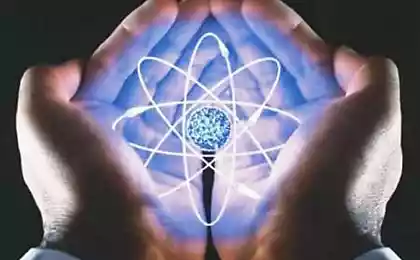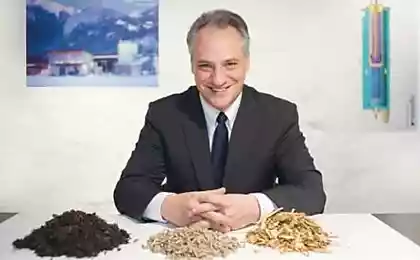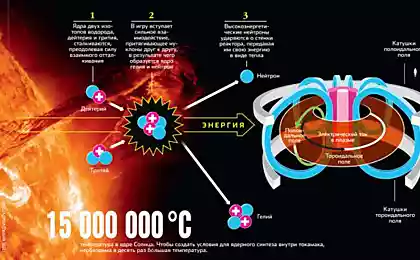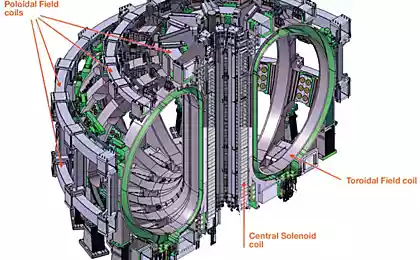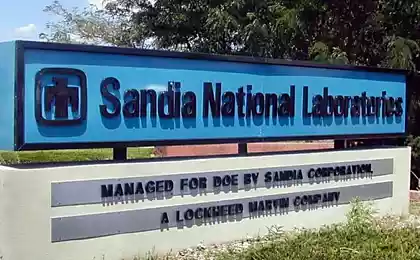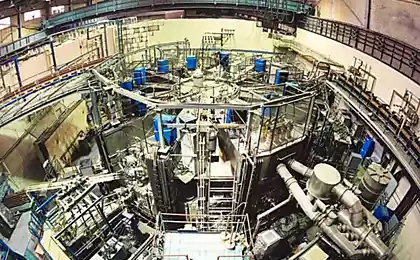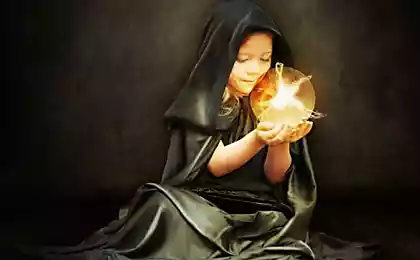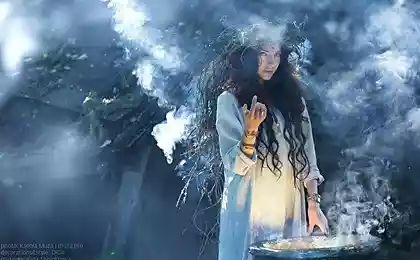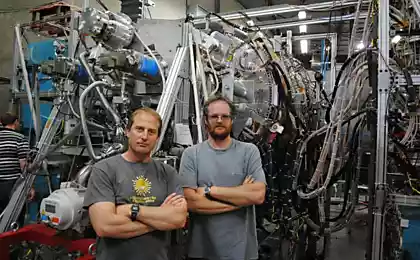429
Scientists of the Sandia lab uses tritium as the fusion fuel
Specialists of the National laboratory of Sandia (Sandia National Laboratories) have extensive experience of working in the direction of using fusion reactions to generate energy. And in a short time at their disposal energy accelerator Z-machine is used as the fusion fuel tritium, the heaviest of the three isotopes of hydrogen. According to calculations, the use of tritium will achieve a 500-fold increase in energy yield of fusion reactions, which should ensure that the reactions self-sustaining. However, the use of tritium is complex and fraught with many dangers.
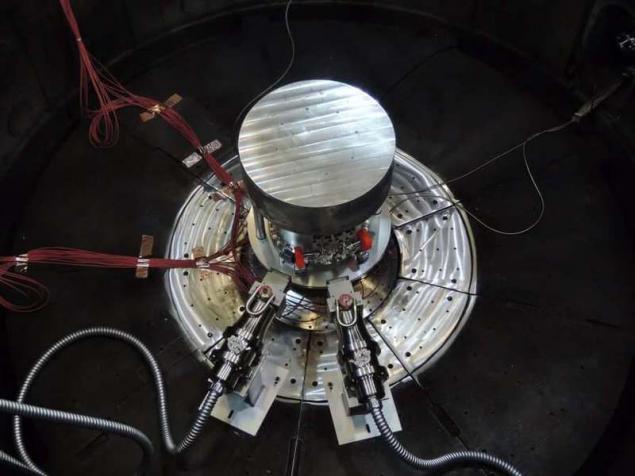
We remind our readers that the accelerator Z-machine is already a few decades is used to create a reaction of thermonuclear fusion in the laboratory. In essence, this accelerator is the generator of powerful impulse, consisting of a huge ring of electric capacitors, in which the accumulated energy is fed into the Central vacuum chamber through an unusually thick cables.
Energy is supplied to the chamber of the accelerator Z-machine during a single pulse 1,000 times the energy of lightning, and the duration of the pulse 20 thousand times shorter than the duration of the lightning discharge. All of this energy is supplied to the "target" made of hundreds of the finest tungsten wires. Under the influence of the summed energy of the tungsten hairs instantly vaporized and converted into high temperature plasma, producing a burst of x-rays. The energy of this surge is equal to two million joules and it is sufficient to raise the temperature in the active zone of the chamber up to 1.8 million degrees Celsius.
Until recently all the energy of the accelerator Z-machine focused on targets of deuterium which is an isotope of hydrogen, nucleus of which contains one neutron. Tritium is an isotope of hydrogen with two neutrons in its nucleus. And soon the specialists of the laboratory Sandia plan to "charge" the accelerator Z-machine is a mixture of deuterium and tritium in the ratio of 50/50. The result will be obtained in 80 times more free neutrons, and the amount of energy output of the reaction will increase 500 times.
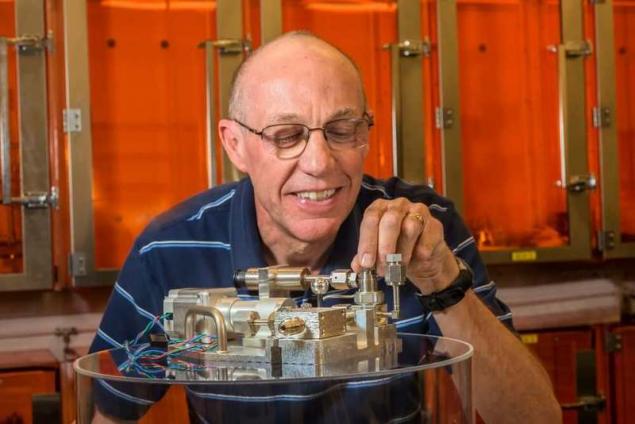
However, tritium is an unstable radioactive isotope with a half life of just over 12 years. Therefore, it should be conducted with the utmost care and with due precautions. Since tritium is just as volatile as hydrogen, it can easily penetrate to where it is not necessary, for example, in water cooling system of the accelerator. However, extensive experience with plutonium will allow the laboratory to make experiments with tritium at the highest level of security.
First experiments with tritium will be done within just one day, but this day will be preceded by a lengthy preparatory and testing period. During this period will be checked for additional equipment for purification from tritium after each "shot" of the accelerator Z-machine. Such cleaning is necessary for security purposes, first, to ensure accurate measurements of the parameters of the incident reactions of thermonuclear synthesis, second.
In conclusion it should be noted that there's not much to worry about on the accelerator Z-machine is in the power of uncontrollable nature of the reaction of thermonuclear synthesis can be a disaster. First, to the accelerator will be introduced to the fuel mixture with a small amount of tritium, which will increase slightly with each subsequent run. And, if all goes according to plans, the sweep ratio of deuterium to tritium 50 50 scientists will get only three years after the outbreak of the first experiments. published
Source: newatlas.com/sandia-fusion-tritium/46365/

We remind our readers that the accelerator Z-machine is already a few decades is used to create a reaction of thermonuclear fusion in the laboratory. In essence, this accelerator is the generator of powerful impulse, consisting of a huge ring of electric capacitors, in which the accumulated energy is fed into the Central vacuum chamber through an unusually thick cables.
Energy is supplied to the chamber of the accelerator Z-machine during a single pulse 1,000 times the energy of lightning, and the duration of the pulse 20 thousand times shorter than the duration of the lightning discharge. All of this energy is supplied to the "target" made of hundreds of the finest tungsten wires. Under the influence of the summed energy of the tungsten hairs instantly vaporized and converted into high temperature plasma, producing a burst of x-rays. The energy of this surge is equal to two million joules and it is sufficient to raise the temperature in the active zone of the chamber up to 1.8 million degrees Celsius.
Until recently all the energy of the accelerator Z-machine focused on targets of deuterium which is an isotope of hydrogen, nucleus of which contains one neutron. Tritium is an isotope of hydrogen with two neutrons in its nucleus. And soon the specialists of the laboratory Sandia plan to "charge" the accelerator Z-machine is a mixture of deuterium and tritium in the ratio of 50/50. The result will be obtained in 80 times more free neutrons, and the amount of energy output of the reaction will increase 500 times.

However, tritium is an unstable radioactive isotope with a half life of just over 12 years. Therefore, it should be conducted with the utmost care and with due precautions. Since tritium is just as volatile as hydrogen, it can easily penetrate to where it is not necessary, for example, in water cooling system of the accelerator. However, extensive experience with plutonium will allow the laboratory to make experiments with tritium at the highest level of security.
First experiments with tritium will be done within just one day, but this day will be preceded by a lengthy preparatory and testing period. During this period will be checked for additional equipment for purification from tritium after each "shot" of the accelerator Z-machine. Such cleaning is necessary for security purposes, first, to ensure accurate measurements of the parameters of the incident reactions of thermonuclear synthesis, second.
In conclusion it should be noted that there's not much to worry about on the accelerator Z-machine is in the power of uncontrollable nature of the reaction of thermonuclear synthesis can be a disaster. First, to the accelerator will be introduced to the fuel mixture with a small amount of tritium, which will increase slightly with each subsequent run. And, if all goes according to plans, the sweep ratio of deuterium to tritium 50 50 scientists will get only three years after the outbreak of the first experiments. published
Source: newatlas.com/sandia-fusion-tritium/46365/


